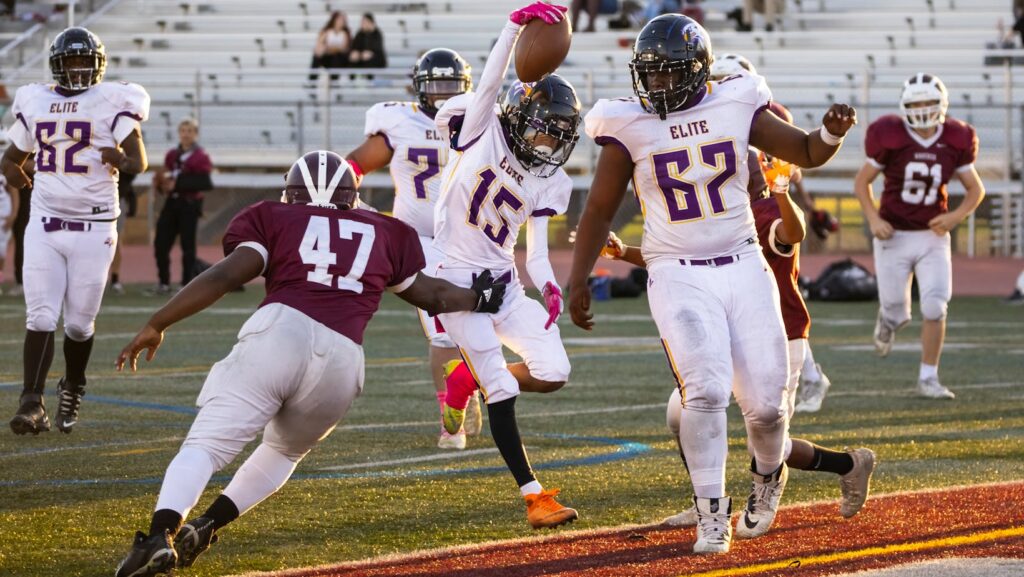As the chill of winter thaws, football fanatics across the nation eagerly anticipate the return of their favorite college teams to the gridiron. The spring games of 2024 promise to be a thrilling preview of the upcoming college football season.
This year, new strategies are being hatched, fresh talents are emerging, and rivalries are heating up. Whether you’re a die-hard fan or a casual observer, these games offer a tantalizing glimpse into what’s in store for the fall.

College Football Spring Games 2024
Delving deeper into the landscape of the college football spring games 2024, it’s important to grasp a comprehensive understanding of key components. These encompass the definition of spring games and their significance in the realm of college football.
What Are Spring Games?
Spring games in college football, constitute annual intramural matches carried out by various teams during their spring practice sessions. These games serve as a culmination of the teams’ rigorous spring training routine. Notably, they offer a combination of practice drills and live-action scrimmages designed in a game-like format. It provides players the opportunity to showcase their skills in a more competitive setting than an average practice.
Why They Are Important for College Football
Spring games bear immense significance in college football. Firstly, they provide an invaluable baseline for coaches to gauge individual progress and team dynamics. Coaches use these to make viable decisions about starting lineups and formation strategies for the forthcoming season.
Besides, these games offer a chance for players to prove their on-field prowess. For new enrollees, walk-ons, and athletes gunning for a starter spot, opportunities spring games present can become make-or-break moments in their collegiate football careers.
Equally essential, spring games serve as a teaser of what spectators can anticipate in the upcoming fall season. Engaging fans generate heightened excitement for the forthcoming main season, solidifying the anticipation already mentioned. The 2024 college spring games, hence, carry a weighty expectation to unveil new talents, strategies, and potential rivalries that will dictate the landscape of college football in the fall.

Impact of Media and Broadcasting
The role of media and broadcasting transforms college football spring games from locally-watched events into widely televised spectacles. It influences not only the direct audience experience but also how the public perceives these matches. It’s essential to dissect both the role of media coverage in shaping public perception and the changes in broadcasting deals for the season 2024.
How Media Coverage Shapes Public Perception
Media coverage casts an intricate spell over public perception. It highlights particular aspects of the games, zooms in on specific players, introduces narratives, and frames the matches for the viewer. Providing a lens through which fans view the college football spring games, the media doesn’t merely cover events; it shapes them. Consider this, even when spectators haven’t attended the game, they catch glimpses through highlight reels, player interviews, and sports commentaries. These fragments play a critical role in giving viewers a sense of what transpired during the game.
Using specific, marketed narratives strategically, media coverage elevates certain rivalries, narratives, and players’ profiles above others. Take, for example, the subtle word choices that commentators make during the game— they can elicit the viewers’ sympathies or create tension. The college football spring games have different plots every year, with the 2024 games unfolding from a distinct perspective sculpted by media coverage.
Changes in Broadcasting Deals for 2024
The shifting landscape of broadcasting deals has a consequential effect on every aspect of the sport – from fan engagement to revenue generation. As the demand for college football matches increases, the broadcasters have picked up on this trend. For the 2024 season, new broadcasting deals promise college football coverage on a scale that’s virtually unparalleled.
Primarily, digital platforms have taken center stage in recent years. With streaming services becoming a routine part of viewing habits, traditional cable broadcasters face challenges. Following this trend, several broadcasting deals now feature streaming options — this is expected to drive increased engagement among a younger, more digitally-inclined fan base.
Television networks remain dominant in the big leagues, securing lucrative deals for exclusive broadcasting rights. The revenue from these deals directly feeds into the college football spring games, impacting everything from facilities, coaching resources, and scholarships for players.
These changes in broadcasting deals for 2024 exemplify the symbiosis between college football and the media, displaying how each shapes the other.

